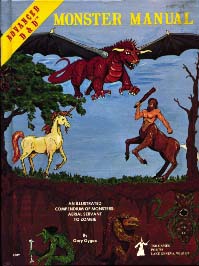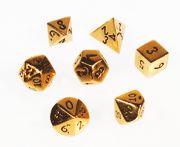 The year (if you’ll cast your mind back) is 1982. Atari Computer has just released the Atari 400, with its flat, membrane keyboard. It is a nice idea: just type on the surface (with raised edges around each key as key guides), no moving parts. Unfortunately, the implementation is terrible. It’s very extremely hard to get a consistent response from the keys, touch typing is nearly impossible, and it’s terrible for playing games. Atari wasn’t the first to try the membrane keyboard, of course . . . the Sinclair ZX80 and ZX81 kit computers had an even worse implementation.
The year (if you’ll cast your mind back) is 1982. Atari Computer has just released the Atari 400, with its flat, membrane keyboard. It is a nice idea: just type on the surface (with raised edges around each key as key guides), no moving parts. Unfortunately, the implementation is terrible. It’s very extremely hard to get a consistent response from the keys, touch typing is nearly impossible, and it’s terrible for playing games. Atari wasn’t the first to try the membrane keyboard, of course . . . the Sinclair ZX80 and ZX81 kit computers had an even worse implementation.
Fast-forward twelve years: the Apple Powerbook 500 has an interesting innovation, a touchpad that can be used as a mousing device. Again, touchpads weren’t new, but they quickly moved to become nearly ubiquitous on laptops over the next decade Some people find touchpads very natural, others despise them. Certainly, after you’ve brushed one with your thumb while trying to type for the fiftieth time, you’re likely to become a bit exasperated.
The common touchpad cannot detect multiple simultaneous touches. Or rather, it selects the centroid of all the contact points as the touch location. If you’re reading this on a laptop, try playing with the touchpad. Place two fingers, or three, lift one, then place it back down again. Amusing (if you’re easily amused) but limited.
 For the past four years or so I’ve been using a FingerWorks TouchStream keyboard on-and-off. This is a return to the completely flat keyboard, but it bears little resemblance to either an Atari 400 or a conventional touchpad. It is two pads, each around five inches by seven inches, connected by a very short ribbon cable. The entire assembly can rest on a metal stand or lie flat on a table.
For the past four years or so I’ve been using a FingerWorks TouchStream keyboard on-and-off. This is a return to the completely flat keyboard, but it bears little resemblance to either an Atari 400 or a conventional touchpad. It is two pads, each around five inches by seven inches, connected by a very short ribbon cable. The entire assembly can rest on a metal stand or lie flat on a table.
The device serves as both keyboard and mouse. Without a doubt, it is the most natural mousing device that I’ve ever used. When using the TouchStream, you no longer have to reach over to the side; simply drop two fingers (your right index and middle fingers) anywere on the right pad, and move them. The mouse pointer naturally follows your gesture. Clicking is as simple: tapping those same two fingers is a mouse click, while tapping three fingers is a double click.
Typing is as simple, though it does require more precision. It is not the same as using a normal keyboard, as no force at all is required. You simply type, touching your fingers lightly to the images of the keys. Unfortunately, it is difficult to keep oriented when in full-on high-speed touch-typing mode. Additional modes (including an embedded programmer’s symbol pad) allow you to reduce the range your hands have to travel while typing.
The array of gestures supported is huge, and completely configurable. The configuration software is written in Java and works under Linux, Mac, and Windows. Certain common gestures (such as pinching the thumb and middle finger together for ‘cut’ and flicking them apart for ‘paste’) quickly become part of your repetoire, and you miss them greatly when returning to more conventional input devices.
This is one of my favorite gadgets, without a doubt. It’s never managed to become my primary input device due to the difficulty of keeping fingers aligned with the keys while typing, but as a mousing and gesture device it is unsurpassed. Sadly, FingerWorks has ceased operations, so this very cool technology is lying fallow. Apple touts the multi-touch interface screen of the iPhone as revolutionary, but it’s hardly an original development.
There are a number of TouchStream keyboards floating around on eBay, so it is still possible to obtain one. I’m tempted to pick up a second, against the eventual failure. (For this same reason, I have a closet full of IBM clicky-keyboards, the best and most satisfying traditional keyboard design.)



 It’s been eighteen years since the publication of that auxiliary tome of
It’s been eighteen years since the publication of that auxiliary tome of  Over my last few lunches I’ve been reading Hollow Earth, by David Standish. It’s a nice overview, tracing the the idea of habitable lands inside the Earth from Edmund Halley through modern fiction. I was particularly pleased by this passage on Giacomo Casanova’s Icosameron, a peculiar utopian tale published in 1788. I quote Standish’s description:
Over my last few lunches I’ve been reading Hollow Earth, by David Standish. It’s a nice overview, tracing the the idea of habitable lands inside the Earth from Edmund Halley through modern fiction. I was particularly pleased by this passage on Giacomo Casanova’s Icosameron, a peculiar utopian tale published in 1788. I quote Standish’s description: You can only cram so many things into your life, and one that has been left out of my personal solution to the time-managment
You can only cram so many things into your life, and one that has been left out of my personal solution to the time-managment 


